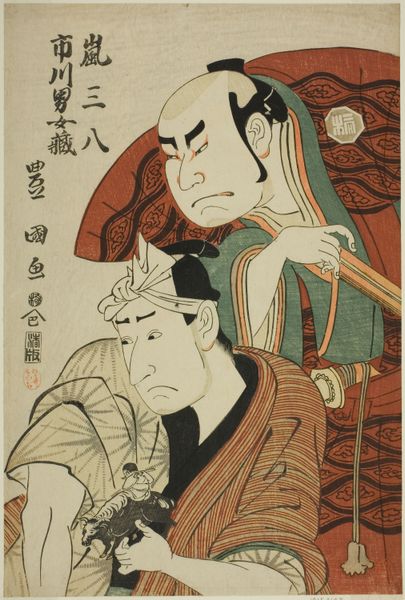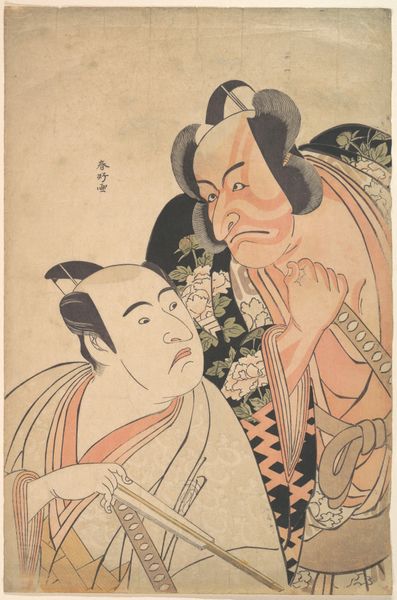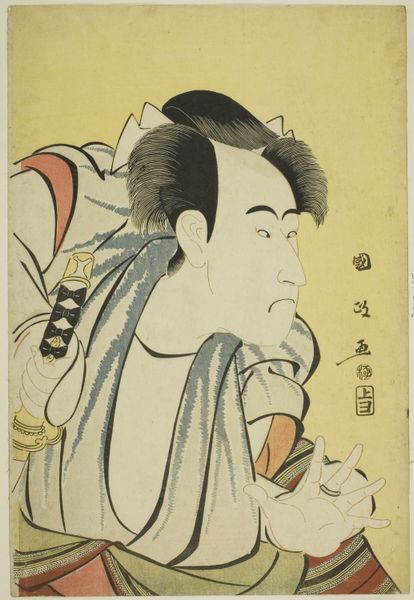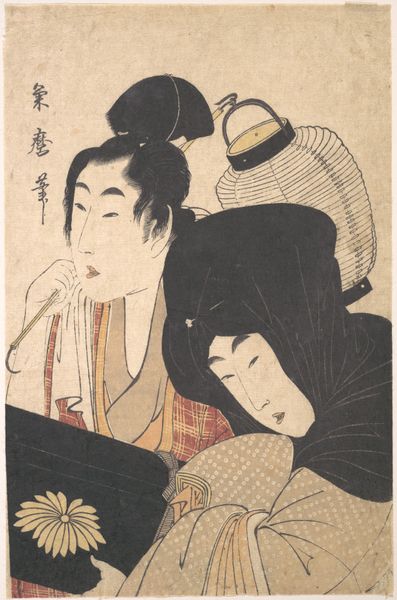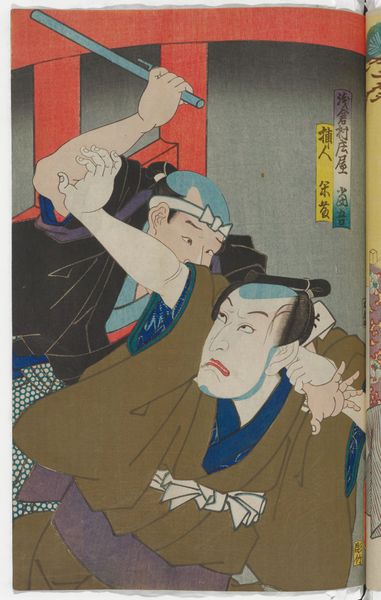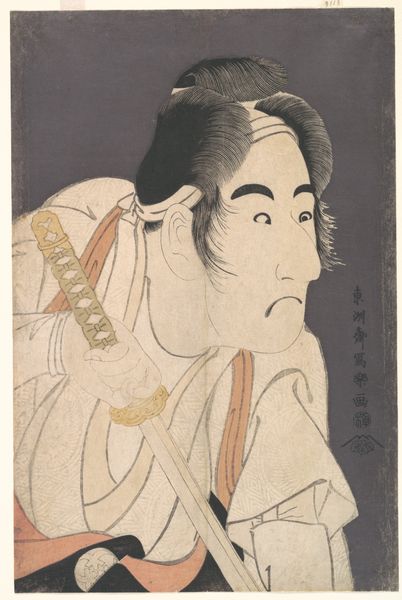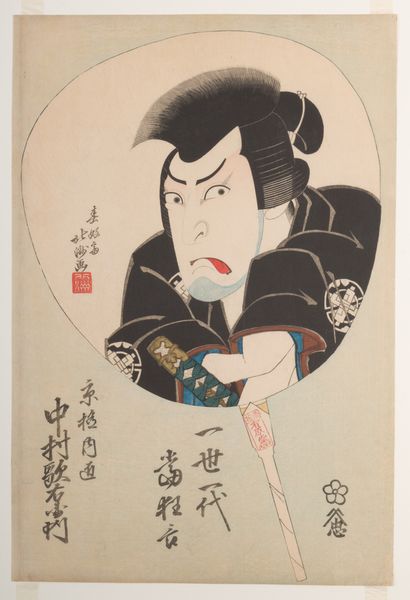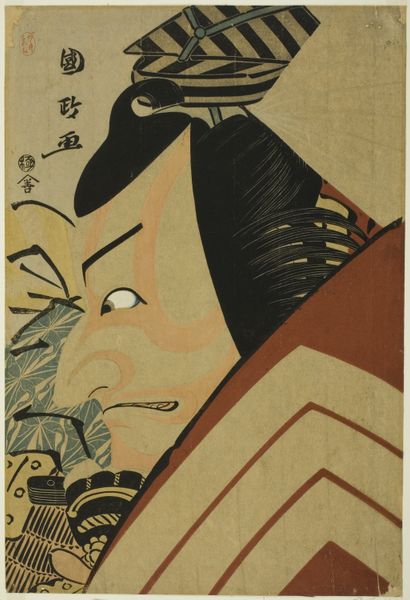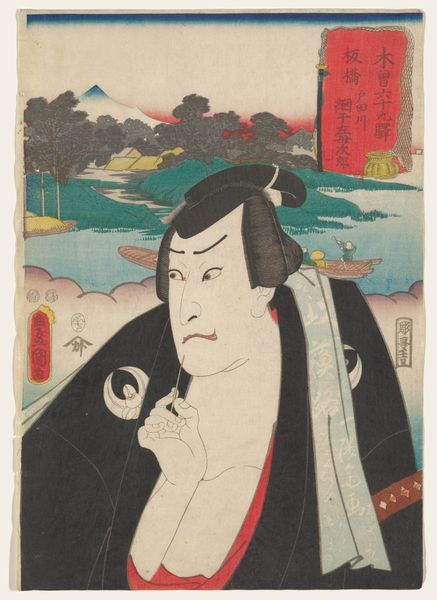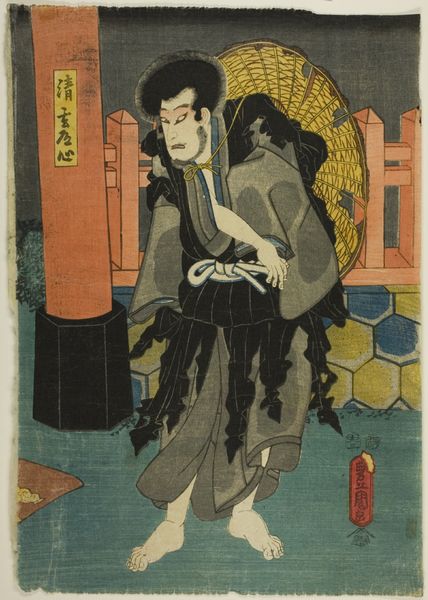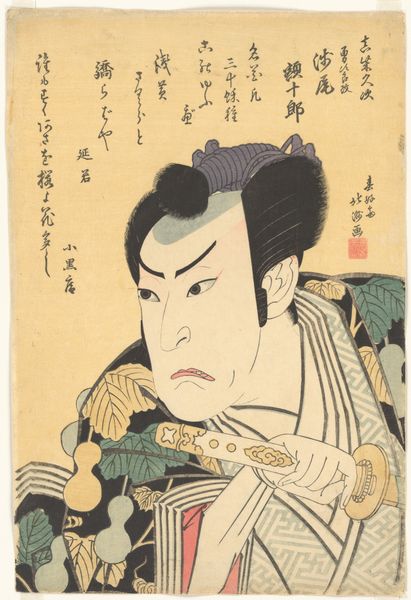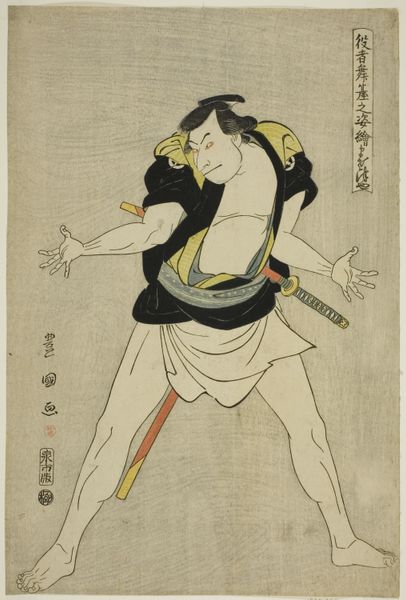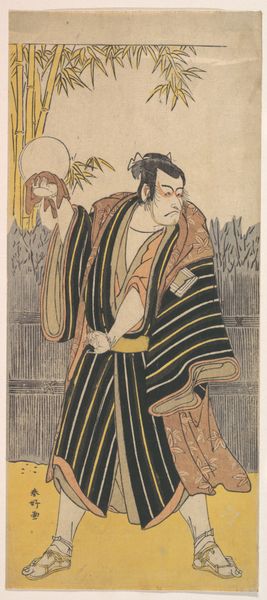
The actors Segawa Kikunojo III as the courtesan Kojoro of the Mikuniya and Arashi Sanpachi I as her elder brother Kujuro in the play "Tomigaoka Koi no Yamabiraki," performed at the Kiri Theater in the first month, 1798 1798
0:00
0:00
print, woodblock-print
#
portrait
# print
#
caricature
#
asian-art
#
caricature
#
ukiyo-e
#
figuration
#
woodblock-print
Dimensions: 37.3 × 24.3 cm (14 11/16 × 9 9/16 in.)
Copyright: Public Domain
Editor: So, this is a woodblock print called "The actors Segawa Kikunojo III as the courtesan Kojoro of the Mikuniya and Arashi Sanpachi I as her elder brother Kujuro in the play 'Tomigaoka Koi no Yamabiraki,'" created by Utagawa Toyokuni I in 1798. I'm struck by the bold lines and the very theatrical expressions. What stands out to you most about this piece? Curator: For me, it's about understanding the labor and materials inherent in its creation. Ukiyo-e prints like this one were mass-produced, involving the artist, the block cutter, and the printer. The choice of wood, the precision of the carving, the application of pigments—all reflect a complex system of production and consumption within Edo society. Do you consider how that influenced its aesthetic? Editor: I hadn’t thought about it that way, I was focused on the image. The faces seemed so individualized for a mass production... How did the economic aspects of its production affect the art itself? Curator: It's essential to consider the social context. These prints were popular entertainment, affordable for a growing urban population. The actors, the plays, the very act of printing were all commodified. This changes the nature of art. It’s less about individual genius, more about understanding the demands of a market and availability of affordable resources. Editor: So, instead of thinking of the artist as an isolated genius, we should think of him as part of a production line responding to a particular audience and availability of resources? That’s quite different from what I usually study. Curator: Precisely. Consider the paper itself, the inks – these choices aren’t just aesthetic. They are dictated by access and the price point to serve the consumption demands of its time. The popularity of certain actors and narratives, printed repeatedly, points to the repetitive labor of image-making serving capitalist appetite for entertainment. Editor: I’m now thinking about woodblock prints very differently, and I now notice how so many aspects relate to the play. This helps understand the value beyond the image. Curator: Exactly, by viewing the work as a commodity, produced through specific processes, we gain new insights into its cultural value.
Comments
No comments
Be the first to comment and join the conversation on the ultimate creative platform.
